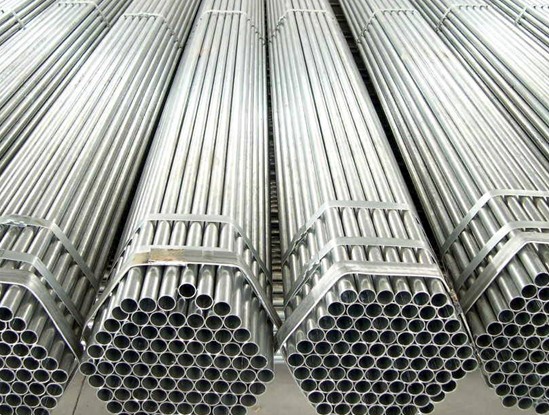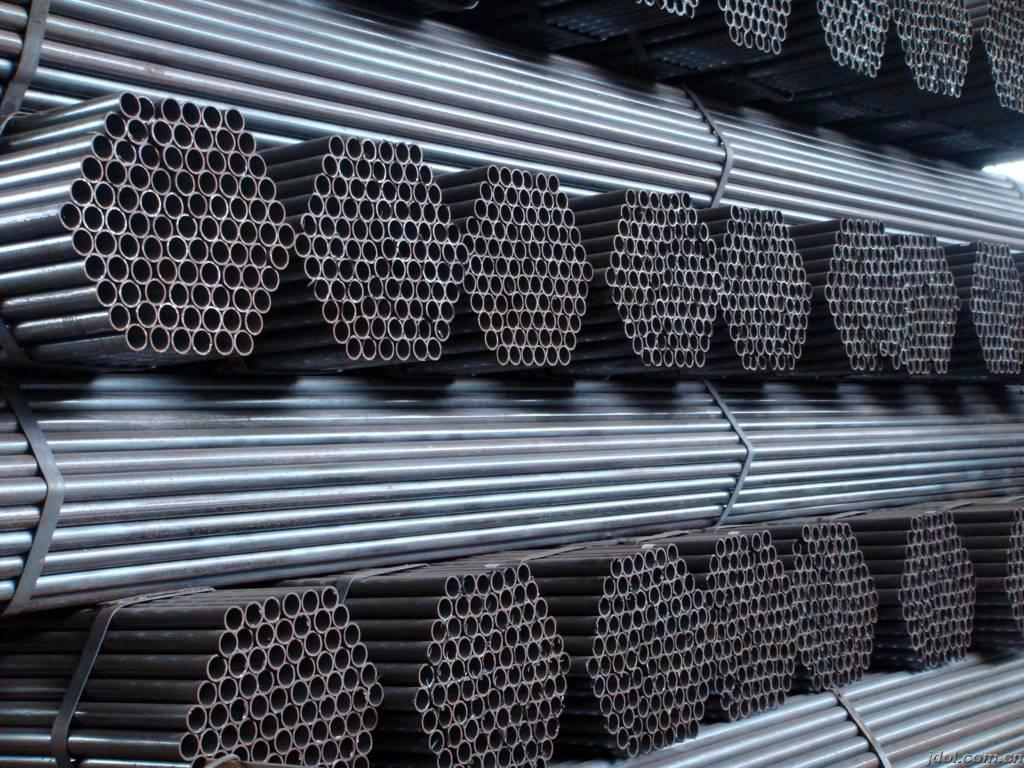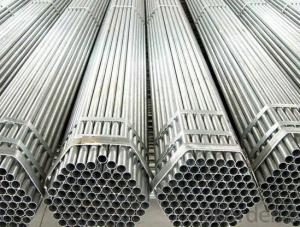Hot Dipped Galvanized steel Pipe Gold supplier
- Loading Port:
- Tianjin
- Payment Terms:
- TT OR LC
- Min Order Qty:
- 4000 PCS
- Supply Capability:
- 30000 PCS/month
OKorder Service Pledge
OKorder Financial Service
You Might Also Like
Gold supplier Hot Dipped Galvanized steel Pipe Details
| Thickness: | 0.45 - 15 mm | Section Shape: | Round | Outer Diameter: | 10.3 - 219 mm |
| Place of Origin: | Tianjin China (Mainland) | Secondary Or Not: | Non-secondary | Application: | Structure Pipe,Industry |
| Technique: | ERW | Certification: | ISO9001,ISO | Surface Treatment: | Galvanized |
| Special Pipe: | Thick Wall Pipe | Alloy Or Not: | Non-alloy | Brand Name: | TJXAHY |
| packing: | as your requirements | galvanized steel pipe: | galvanized steel pipe | galvanized pipe BS 1387-1985: | galvanized pipe BS 1387-1985 |
| hot dip galvanized pipe: | hot dip galvanized pipe | Samples: | can be provided | product name: | Gold supplier !!!!! Hot Dipped Galvanized Pipe |
| Name: | Hot Dipped Galvanized steel Pipe | Grade: | 10#,20#,45#,16Mn,A106(B,C),A335, P11,A53(A,B),Q195,Q215,Q235,Q345,10#-45#,A53-A369,Q195-Q345 | Standard: | ASTM A106-2006,BS |
Packaging & Delivery
| Packaging Detail: | standard seaworthy packing |
| Delivery Detail: | 7--20days after receiving the deposit |
Gold supplier Hot Dipped Galvanized steel Pipe Specification
O.D | O.D tolerance | W.T | Thickness Tolerance |
10.3--219MM | ±0.03 | 0.6--10MM | ±0.02 |
Length | 2--12M,according to customers' requirements | ||
Zinc coating | 275--350g/m2 | ||
International Standard | ISO 9001;2008 | ||
Standard | ASTM A 53/BS 1387-1985 | ||
Material | Q195/Q215/Q235/Q345 | ||
Product Category : | Metallurgy,Mineral & Energy | ||
Technique: | Welded | ||
Usage | 1.For low pressure liquid delivery such as water,gas and oil 2.For construction,e.g building greenhouse | ||
Main market: | Middle east,Africa,North and South America,East and West Europe,South and southeast Asia,Australia | ||
Place of Origin | China | ||
HS code: | 7306309000 | ||
Remarks | 1)Payment term:T/T 2)Trade Terms:FOB/CFR/CIF 3)Minimum quantity of order:25 MT (25,000KGS) 4)Delivery period:10 to 30 Days. | ||
Gold supplier Hot Dipped Galvanized steel Pipe Pictures


- Q:How are steel pipes used in the manufacturing of hydraulic systems?
- Steel pipes are commonly used in the manufacturing of hydraulic systems due to their durability, strength, and resistance to high pressures. These pipes are typically used to transport hydraulic fluid, providing a reliable and leak-free connection between various components such as pumps, valves, and actuators. Steel pipes also offer the advantage of being able to withstand harsh operating conditions and ensure efficient fluid flow, making them an essential component in hydraulic system manufacturing.
- Q:What are the different grades of steel used in pipe manufacturing?
- The different grades of steel used in pipe manufacturing vary depending on the intended use and specific requirements. Some common grades include carbon steel (such as ASTM A106 or API 5L), alloy steel (such as ASTM A335), stainless steel (such as ASTM A312), and duplex steel (such as ASTM A790). These grades have different chemical compositions and mechanical properties to suit various applications in industries like oil and gas, construction, and plumbing.
- Q:How are steel pipes coated to prevent internal corrosion?
- Steel pipes are coated to prevent internal corrosion through a process called internal coating. This involves applying a layer of protective material, such as epoxy or polyethylene, to the inner surface of the pipe. The coating acts as a barrier, preventing the steel from coming into contact with corrosive substances in the fluid being transported, thus effectively reducing the risk of internal corrosion.
- Q:Are steel pipes resistant to ultraviolet (UV) radiation?
- Ultraviolet (UV) radiation poses a threat to steel pipes as they do not possess inherent resistance. This type of radiation has the potential to induce degradation and discoloration in various materials, including steel. However, the extent of harm inflicted depends on several factors, including steel type, duration and intensity of UV exposure, and the presence of protective coatings or finishes on the pipes. Generally, uncoated steel pipes are more vulnerable to UV damage compared to those treated with protective coatings or finishes. Coatings such as epoxy or polyethylene act as a shield against UV radiation, effectively preventing steel degradation and discoloration. Hence, it becomes crucial to consider the specific application and environment when selecting steel pipes and implementing suitable protective measures to ensure their durability and performance.
- Q:How are steel pipes protected against external moisture?
- Steel pipes are protected against external moisture through a variety of methods. One common method is the application of a protective coating or paint on the surface of the pipes. This coating acts as a barrier, preventing moisture from coming into direct contact with the steel. The coating can be made of different materials, such as epoxy, polyethylene, or zinc, depending on the specific requirements and environment. Another method of protection is through the use of corrosion inhibitors. These inhibitors are added to the internal or external surfaces of the pipes, forming a protective layer that prevents moisture from causing corrosion. Corrosion inhibitors can be in the form of chemicals, such as rust converters or rust preventatives, which react with the steel to form a protective barrier. Additionally, steel pipes can be protected against external moisture through cathodic protection. This technique involves the use of sacrificial anodes or impressed current to create an electric current that protects the steel. Sacrificial anodes, typically made of zinc, aluminum, or magnesium, are attached to the steel pipes and corrode over time instead of the steel, thus preventing moisture-induced corrosion. Furthermore, proper insulation and waterproofing measures are crucial in protecting steel pipes from external moisture. Insulation materials, such as foam or tape, are applied to the pipes to provide an additional layer of protection and prevent moisture infiltration. Waterproofing measures, such as the use of sealants or membranes, can also be implemented to ensure that no moisture seeps into the pipes. Regular maintenance, including inspections and repairs, is essential to ensure the continued protection of steel pipes against external moisture. By promptly addressing any areas of damage or corrosion, the integrity of the protective measures can be maintained, prolonging the lifespan of the steel pipes and preventing costly repairs or replacements in the future.
- Q:How are steel pipes affected by international trade policies?
- Steel pipes can be significantly affected by international trade policies. For instance, trade barriers such as tariffs or quotas can increase the cost of importing steel pipes, making them less competitive compared to domestically produced pipes. Conversely, liberalized trade policies can enhance market access for steel pipe exporters, allowing them to expand their market share globally. Overall, the impact of international trade policies on steel pipes depends on the specific policies implemented and their effect on the cost, availability, and competitiveness of these products in the international market.
- Q:What is the purpose of pipe flanges in steel pipes?
- The purpose of pipe flanges in steel pipes is to provide a secure and leak-proof connection between two pipes or fittings. Flanges act as a connection point, allowing easy assembly and disassembly of pipes while ensuring a tight seal to prevent any leakage or loss of fluid or gas.
- Q:How are steel pipes used in the power generation industry?
- Steel pipes are extensively used in the power generation industry for various purposes, such as transporting steam, water, and other fluids in power plants. They provide a reliable and durable solution for the high-pressure and high-temperature conditions found in power generation systems. Steel pipes are also used for the construction of boilers, condensers, and heat exchangers, ensuring efficient heat transfer and energy production. Additionally, steel pipes are employed in the exhaust system of power plants to safely and efficiently discharge emissions. Overall, steel pipes play a critical role in the power generation industry by facilitating the transportation of fluids and contributing to the reliable and efficient operation of power plants.
- Q:Seamless steel tube DN15 specification phi 18*3 what do you mean?
- Seamless steel pipe having a hollow cross section, used as a conduit for conveying fluids, such as pipelines for transporting petroleum, natural gas, gas, water, and certain solid materials. Compared with solid steel such as round steel, steel tube is lighter in strength and equal in resistance to bending and torsion. It is an economical cross section steel and is widely used in the manufacture of structural and mechanical parts.
- Q:How do you transport steel pipes safely?
- In order to transport steel pipes safely, it is essential to engage in proper planning, utilize appropriate equipment, and adhere to safety measures. To ensure the safe transportation of steel pipes, the following guidelines should be followed: 1. Select suitable transportation equipment: Opt for either a flatbed trailer or a truck with a flatbed when transporting steel pipes. Make certain that the trailer or truck is equipped with a robust and secure tie-down system to prevent any movement or shifting of the pipes during transit. 2. Secure the pipes: Use either nylon or steel straps to fasten the steel pipes to the trailer or truck bed. Ensure that the straps are adequately tightened so as to evenly distribute the weight of the pipes and prevent any potential movement or shifting. 3. Safeguard the pipes: Implement the use of pipe chocks or protective materials such as foam or rubber to prevent the steel pipes from rolling or rubbing against each other during transportation. This will aid in minimizing any possible damage and maintaining the integrity of the pipes. 4. Adhere to weight restrictions: Verify that the weight of the steel pipes being transported does not exceed the load capacity of the transportation equipment. Overloading can lead to instability and compromise safety. 5. Comply with road safety regulations: Abide by all local traffic laws and regulations, including adhering to speed limits and securing any necessary permits or licenses for oversized loads if required. Additionally, utilize hazard warning signs or flags when transporting lengthy or oversized steel pipes to alert other road users. 6. Perform regular inspections: Prior to embarking on the journey, inspect the straps, tie-downs, and other securing mechanisms to ensure they are in satisfactory condition. Regularly monitor the load during transit to guarantee its continuous security. 7. Plan the route: Select a route that is suitable for the size and weight of the steel pipes being transported. Avoid roads with low bridges, narrow lanes, or weight restrictions that may pose a hazard to the safe transportation of the pipes. 8. Consider weather conditions: Take into account weather conditions, such as strong winds or heavy rain, which can impact the stability of the load. Make necessary adjustments to the transport plan or postpone the journey if deemed necessary. 9. Train and educate drivers: Ensure that the drivers responsible for transporting steel pipes are adequately trained and knowledgeable about the proper procedures for securely and safely transporting the load. Regularly provide them with updates on safety protocols and any changes in regulations. By adhering to these guidelines, the transportation of steel pipes can be executed safely, thereby reducing the risk of accidents, damage to the pipes, and ensuring the safety of all individuals involved in the transportation process.
1. Manufacturer Overview |
|
|---|---|
| Location | |
| Year Established | |
| Annual Output Value | |
| Main Markets | |
| Company Certifications | |
2. Manufacturer Certificates |
|
|---|---|
| a) Certification Name | |
| Range | |
| Reference | |
| Validity Period | |
3. Manufacturer Capability |
|
|---|---|
| a)Trade Capacity | |
| Nearest Port | |
| Export Percentage | |
| No.of Employees in Trade Department | |
| Language Spoken: | |
| b)Factory Information | |
| Factory Size: | |
| No. of Production Lines | |
| Contract Manufacturing | |
| Product Price Range | |
Send your message to us
Hot Dipped Galvanized steel Pipe Gold supplier
- Loading Port:
- Tianjin
- Payment Terms:
- TT OR LC
- Min Order Qty:
- 4000 PCS
- Supply Capability:
- 30000 PCS/month
OKorder Service Pledge
OKorder Financial Service
Similar products
New products
Hot products
Hot Searches
Related keywords






























